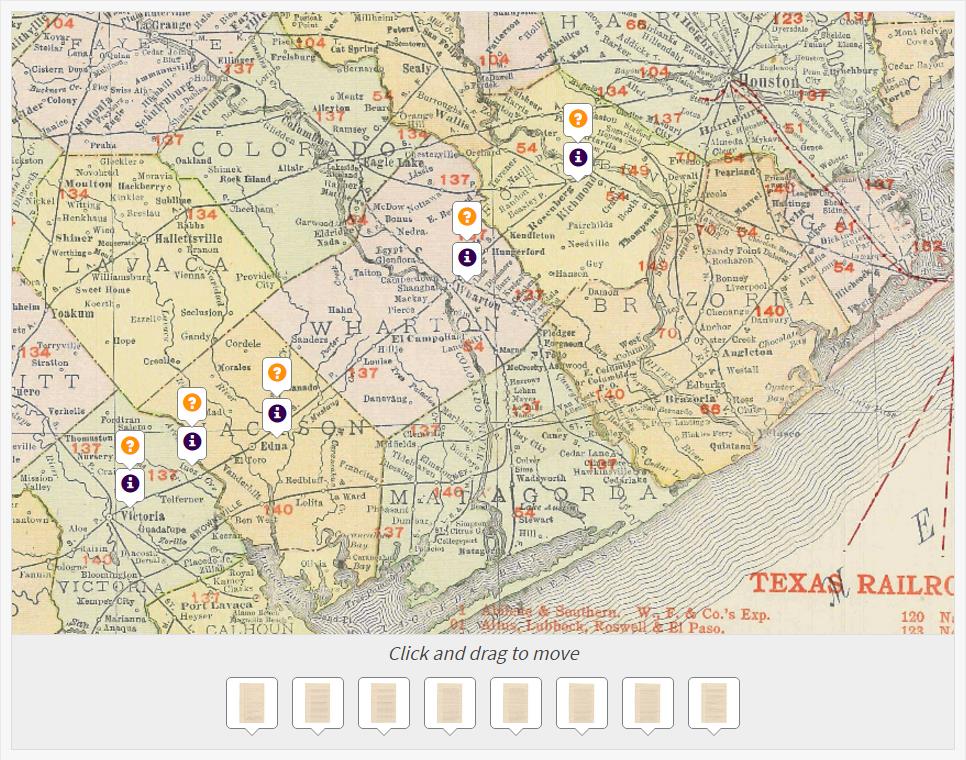Navigating the Rails
Mapping History

About this Activity
- Created by:Andrew Zetts
- Historical Era:Civil War and Reconstruction (1850-1877)
- Thinking Skill:Historical Analysis & Interpretation
- Bloom's Taxonomy:Analyzing
- Grade Level:High School
*Please be aware that the documents in this activity contain language that may only be appropriate for older and more mature students.
In this activity, students will read about the racial disparities that continued to characterize the South after Reconstruction. Students will read an excerpt of a court testimony given by Lola Houck, a woman who took the Southern Pacific Railway to court after being harassed by one of its employees.
Students will read the questions posted along the train route on which Houck travelled (line 137 represents the Southern Pacific’s tracks) and use Houck’s testimony (available in the tray beneath the map) to answer them. Students should post their answers in the provided student response boxes. Finally, students will drag and drop the specific pages of the testimony from which they obtained their answers next to the question the page(s) answers.
Once students finish the activity, they should reflect on its contents by answering the questions in the “When You’re Done" section. This can take the form of a journal entry or a class discussion.
https://www.docsteach.org/activities/student/navigating-the-railsIn this activity, students will read about the racial disparities that continued to characterize the South after Reconstruction. Students will read an excerpt of a court testimony given by Lola Houck, a woman who took the Southern Pacific Railway to court after being harassed by one of its employees.
Students will read the questions posted along the train route on which Houck travelled (line 137 represents the Southern Pacific’s tracks) and use Houck’s testimony (available in the tray beneath the map) to answer them. Students should post their answers in the provided student response boxes. Finally, students will drag and drop the specific pages of the testimony from which they obtained their answers next to the question the page(s) answers.
Once students finish the activity, they should reflect on its contents by answering the questions in the “When You’re Done" section. This can take the form of a journal entry or a class discussion.




